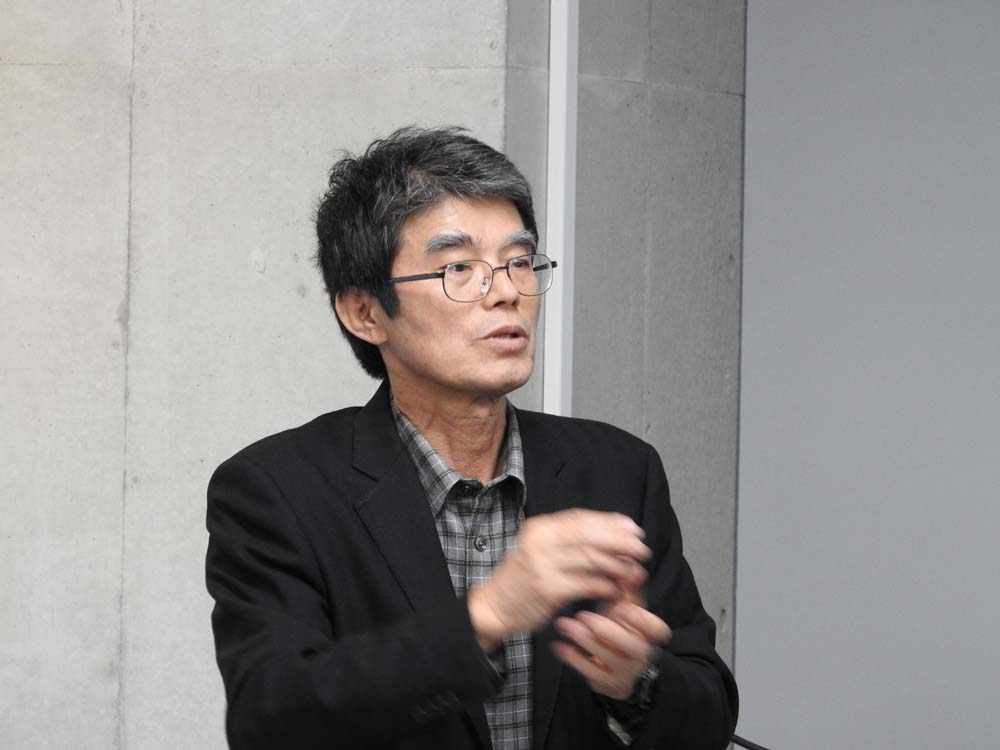島嶼研特別研究会「ハブの進化―毒タンパク質の加速進化―」
島嶼研特別研究会「ハブの進化―毒タンパク質の加速進化―」を開催いたしました。
【発表者】服部正策(東京大学医科学研究所奄美病害動物研究施設)
【日 時】平成31年3月4日(月)16:30~
【場 所】鹿児島大学総合教育研究棟 5階 国際島嶼教育研究センター会議室
ハブ(Protobothrops flavoviridis)はトカラ列島南部から、奄美大島、徳之島、沖縄島とその周辺離島に生息するクサリヘビ科マムシ亜科に属する毒蛇である。アジアに生息するマムシ亜科の中では最大種で、体長2m、体重2kgに成長する。行動範囲も広いために、奄美大島と徳之島で1年に50件近いハブ咬症が発生している。
ハブが1回に放出する毒液は1mlもあり、多くのタンパク毒を含んでいる。その中で筋壊死活性を持つホスホリパーゼA2とそのアイソザイムには加速進化が確認されている。中でも、強い筋壊死活性を持つ塩基性アイソザイム3種はトカラ、奄美、徳之島のハブに特異的なもので、沖縄のハブには認められない。このように、中琉球の中でも島嶼別の違いが大きいことも他のヘビ類に見られない特徴である。島嶼別に認められる違いは、ハブ毒タンパク質の変異だけでなく、体色や外部形態、習性にまで及んでいる。これらの違いは中琉球の島々成立の地史を現在に伝えるものである。
世界自然遺産登録を目指す奄美大島、徳之島、沖縄島、西表島の生物多様性を特徴づける動物としてもハブとサキシマハブは重要な構成要素である。ハブは住民に被害を与える毒蛇であり、神様であり、生物資源の宝庫であり、観光資源でもある。今でも新しいことが次々と明らかになっているハブの現状を紹介する。
Evolution of Habu: Accelerated Evolution of Venom Proteins
HATTORI Shosaku (Amami Laboratory of Injurious Animals, Institute of Medical Science, University of Tokyo)
4 March 2019, 16:30-, Kagoshima University, The Interdivisional Education and Research Building , 5th Floor
Habu (Protobothrops flavoviridis) is a venomous snake belonging to subfamily Crotalinae family Viperidae, and inhabits the south part of the Tokara Islands, Amami-Oshima Island, Tokunoshima Island, Okinawa Island and its surrounding islands. Among snakes of the subfamily inhabiting Asia, Habu is the largest species, growing to a length of 2 m and a weight of 2 kg. Because Habu has a wide range of action, nearly 50 cases a year of bites of Habu are reported in Amami-Oshima and Tokunoshima islands.
Habu releases 1 ml of venom by a bite and it contains various venom proteins. Among the proteins, the accelerated evolution has been confirmed in phospholipase A2 and its isozymes having myonecrotic activities. Three isozymes of them with strong myonecrotic activities are specific in the Tokara Islands, Amami-Oshima Island, and Tokunoshima Island, but not in Okinawa Island. Differences between the islands were also found in body color, external morphology and habits. These differences are due to the earth history of the formation of the central parts of the Ryukyu Archipelago.
Habu and Sakishimahabu are important as animals characterizing the biodiversity of Amami-Oshima, Tokunoshima, Okinawa, and Iriomote islands, which the government aims to register as a World Natural Heritage Site. Habu is a viper that harms residents and is a god, a treasure of biological resources, and a tourism resource in this region. I will introduce Habu with its latest research findings.
当日の様子
 服部正策先生
服部正策先生 会場風景
会場風景
以下のメディアで研究会の様子が紹介されました
- 奄美新聞 2019年3月6日 p.9
